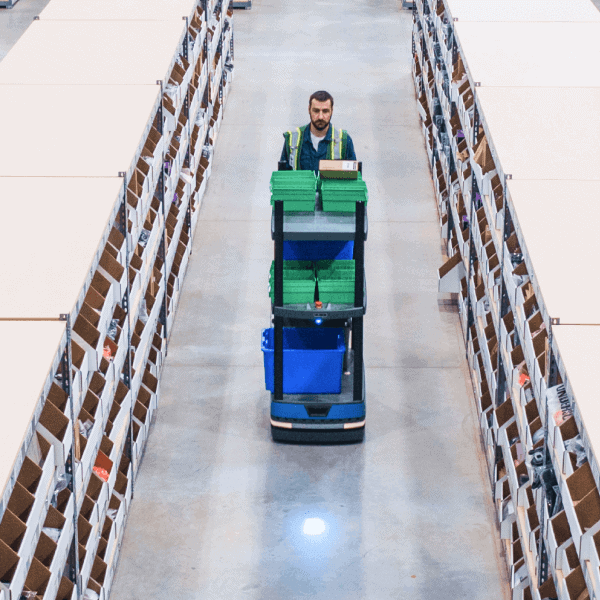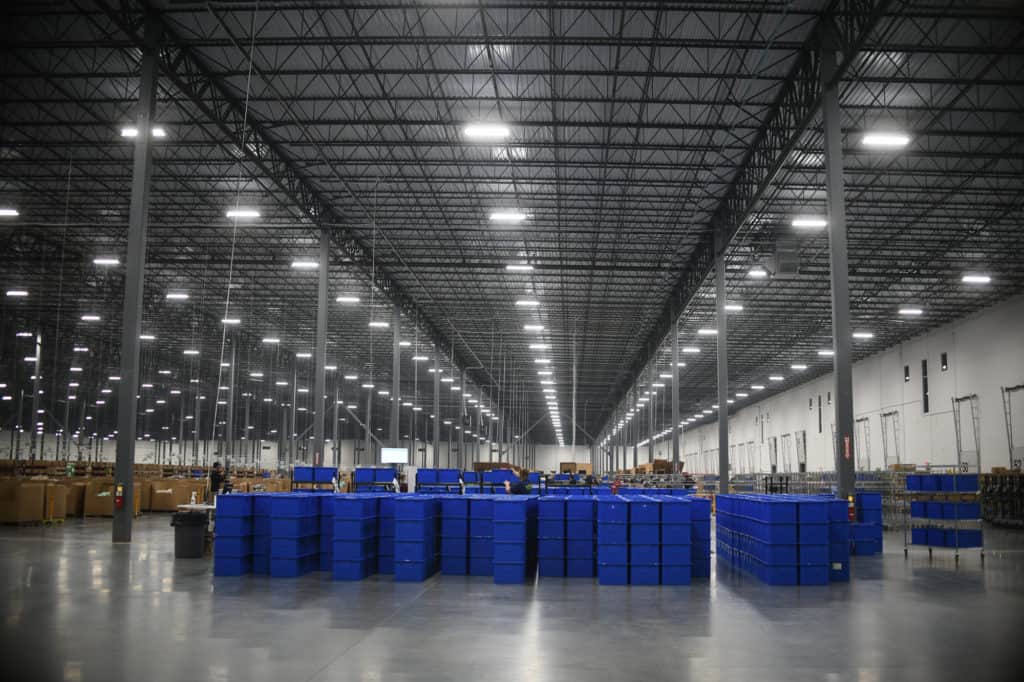Technology is quickly transforming the world around us, impacting everything from the way we communicate to how we operate our businesses. Technology is transforming warehouses, too, supporting leaner, more agile operations and enabling warehouses to offer rapid delivery and error-free orders – elements that are essential to the success of a fulfillment operation.
E-commerce drives growth in warehouses & DCs

According to Walker Sands’ The Future of Retail 2019: The Paradox Between Convenience and Connection, consumers are increasingly comfortable shopping online, with 46% saying they’re more open to purchasing big-ticket items such as a car or grill online than they were a year ago. What’s more, nearly one-third of consumers (32%) receive at least one Amazon package each week. For the sixth year in a row, free and fast shipping continues to be the #1 incentive for consumers to shop online.
To meet those demands, companies need to have strategically placed warehouses and regional distribution centers that put products in closer proximity to end consumers – and that means more warehouses and DCs. In the U.S., the number of operating warehouses grows at an increasing rate each year, reaching 18,182 in 2018. That’s an increase from 15,152 in 2010, or 3,030 new warehouses over eight years. In Peerless Research Group’s 2019 Warehouse and Distribution Center (DC) Operations Survey, 79% of respondents said they plan to expand their operations within the next 12 months, compared to 76% from the 2018 survey.
Domestic, regional warehouses allow companies to get products to consumers faster and at a lower cost compared to overseas shipping. Not only are products closer to end consumers, but there are fewer costs such as extra taxes, tariffs and other fees commonplace with overseas shipping.
Why is technology important for warehouses?
Some companies open their own warehouses or distribution centers, but opening a new facility requires substantial capital. To avoid a significant capital investment, some companies enlist a third-party logistics provider (3PL) to provide warehousing, distribution and logistics services, while others turn to on-demand warehousing to secure additional storage capacity when they need it. In addition to securing additional storage capacity, many warehouses turn to technology innovations to meet the demand for rapid, accurate deliveries.
But what technologies are behind the curtain? And how are they changing the warehouse landscape? In this article, we’ll examine four ways technology is transforming warehouses:
- Automation improves warehouse agility
- IoT, sensors and scanners improve accuracy
- Drones and robots reduce overhead costs
- AI supports efficient, data-driven processes
Let’s take a closer look at each of these advancements and how they’re impacting the warehouse industry.
4 ways technology is transforming warehouses
1. Automation improves warehouse agility
Overstock and understock are costly, resulting in long-term storage challenges, backorders and a loss of consumer trust. According to The 2017 E-Commerce Fulfilment Report by Peoplevox,
46% of the leading issues in retail and warehousing result from human error, and it costs the industry $1.75 trillion in lost revenue.
Warehouses turn to automation solutions to combat these challenges. Findings from Peerless Research Group’s 2019 Warehouse and Distribution Center (DC) Operations Survey “generally pointed toward a continued surge in the willingness to apply automation and software,” with 23% of respondents reporting that they’re adding automation to contain costs, compared to just 15% of respondents in 2018.
There are several technology solutions that support more agile warehouse operations. Warehouse management systems (WMS), for example, are a common technology used by modern warehouses. These software solutions help to maintain optimal inventory levels and maximize space utilization for improved profitability.
Analytics solutions for forecasting offer better demand predictions, as well, allowing warehouses to more accurately fine-tune inventory levels to meet demand while avoiding common issues like overstocking, which takes up valuable warehouse storage space and adds to long-term storage costs.
Collaborative mobile robots, another automation solution for warehouses and distribution centers, help keep warehouse associates on-task and improve order picking accuracy by guiding associates through each task.
2. IoT, sensors, and scanners improve accuracy

Technology such as IoT, sensors and barcode scanners enable warehouses to digitize processes that were previously manual, time-consuming and error-prone.
Inventory management is a good example. Before technology advancements made it possible to streamline or automate inventory counts, warehouse associates manually counted each item and documented SKUs and the number of items in stock. This process is tedious, time-consuming and subject to human error.
While many warehouses still utilize manual inventory counts periodically as an auditing process, automatic data collection makes the inventory management process more efficient. For example, RFID tags transmit data automatically, providing better visibility into inventory levels in real-time. Barcode labels and scanners are another option, allowing associates to document inventory data with a simple barcode scan, rather than relying on error-prone manual data entry.
Many mobile devices now have barcode scanning capabilities, which eliminates the need for dedicated barcode scanners. Coupled with cloud computing, warehouse associates can easily access software systems for real-time access to data. GPS solutions help reduce theft and inventory loss through real-time location tracking. GPS also enables real-time shipment tracking for end-to-end supply chain visibility.
3. Drones and robots reduce overhead costs
Warehouse robots augment the work of humans, making processes like picking more efficient and accurate. Robots also reduce physical strain on human workers, which helps to improve morale and keep employees motivated. By enabling faster order fulfillment, they help to reduce the cost of overtime.
Companies like Amazon and Alphabet (Google’s parent company) are experimenting with drones to support last-mile delivery capabilities, although this use case isn’t yet commonplace. Drones are also used for automating inventory counts by scanning barcodes and recording item location information in the WMS — a process up to 50 times faster than manual data collection and entry. Walmart also tested drones for inventory management in 2016, using sensor-equipped drones that flew through warehouse aisles and sent alerts for items low in stock and items that were not in their assigned inventory slots.
4. AI supports efficient, data-driven processes
AI and machine learning are making a big impact on warehouses by supporting efficient, data-driven processes. Collaborative mobile robots, for instance, leverage machine learning and AI to optimize work and picking routes in real-time, reducing unnecessary walking to boost productivity. Collaborative mobile robots can make rapid decisions based on the current work and warehouse conditions, helping associates manage multiple tasks during a single trip to the warehouse floor.
Data analysis of real-time order stats allows operators to make inventory slotting decisions to optimize picking routes and reduce in-aisle congestion, which not only improves productivity but also safety.
Another perk of collaborative mobile robots is their flexibility, which enables warehouse operators to lower capital costs. Warehouses can purchase enough robots to meet normal demand, opting to rent additional units during peak periods to accommodate increased demand and returning units when demand returns to normal.
Savvy warehouse operators keep up with the competition by implementing new technologies that cut costs, increase efficiency, enhance agility, and boost profits. By staying on top of cutting-edge technologies, you can give your business the competitive edge it needs to thrive.
Download our white paper, 7 Reasons Why Warehouse Robots Beat Traditional Automation, to learn more about one technology that is transforming warehouses and how collaborative mobile robots can help you boost productivity and accuracy in your warehouse.


